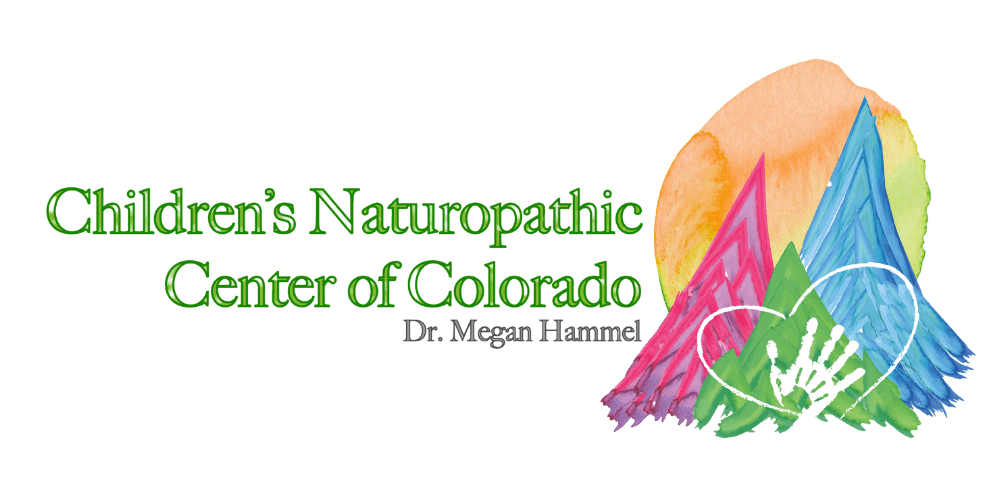We at Children’s Naturopathic Center of Colorado Align with the Pediatric Association of Naturopath Physicians

The PedANP rejects racism, oppression and violence in all its forms.
We have watched recent events with sadness and anger. The murder of George Floyd is the most recent and public example of racism that plays out every day in a spectrum of ways. Structures of systemic racism threaten the physical and mental safety of children for the duration of their lives. White supremacist structures directly harm children, families and communities who are oppressed due to race. Children die at increased rates because of the construct of race. Children exposed to circumstances of adversity due to structural inequities experience toxic stress that threatens their physical and mental health and behavioural strategies for the rest of their lives. Racism systematically disadvantages children through impacted access to adequate education, nutrition, housing, and healthcare, which ultimately increases the risk of exposure to environmental toxins, joblessness, poverty, substance use, violence, chronic disease, and incarceration. These patterns are persistent and transgenerational.
The PedANP acknowledges that the systems that create these inequities were deliberately designed to concentrate wealth among the white elite. Entire populations within our society have suffered for 400 years in order for others to benefit. It is not enough to focus our efforts as healthcare providers – a position itself infused with privilege – on anti-oppression. Supporting children in reaching their full potential is contingent on directly confronting and actively taking steps to deconstruct the white supremecist systems that have created intergenerational patterns of white privilege and oppression of racialized populations. Systemic racism, through silencing and marginalizing contributions of entire communities, harms the health and wellbeing of society as a whole.
In its 2019 policy statement The Impact of Racism on Child and Adolescent Health, the American Academy of Pediatrics offers guidance for those who provide healthcare to children. The PedANP encourages all naturopathic doctors who provide care to children to review this resource, and deepen their understanding of the mechanisms of structural racism and injustice. We also encourage all health providers to support parents to talk to their children about racism in a developmentally-appropriate way, and to take active steps to work towards dismantling flawed systems.
As much as many of us are feeling painful emotions right now, we at the PedANP also feel hope. When rage is expressed, and difficult conversations come to the surface, it is an opportunity to do something different. We must examine our privilege and look for openings to do better.
Helpful Resources
Nixon, S.A. The coin model of privilege and critical allyship: implications for health. BMC Public Health 19, 1637 (2019). https://doi.org/10.1186/s12889-019-7884-9
Naomi Priest, Jessica Walton, Fiona White, Emma Kowal, Brandi Fox & Yin Paradies (2016) ‘You are not born being racist, are you?’ Discussing racism with primary aged-children, Race Ethnicity and Education, 19:4, 808-834, DOI: 10.1080/13613324.2014.946496
RESOURCES FOR PARENTS AND CAREGIVERS ABOUT RACE AND RACISM
Race, Power and Policy: Dismantling Structural Racism
Talking to Children about Racism: The Time is Now
What Every Health Researcher Needs to Know About Health Equity: Privilege, Oppression and Allyship
https://www.youtube.com/watch?v=-aCn72iXO9s
And for those who think racism doesn’t exist in Canada:
References
Bailey ZD, Krieger N, Agénor M, Graves J, Linos N, Bassett MT. Structural racism and health inequities in the USA: evidence and interventions. Lancet. 2017;389(10077):1453‐1463. doi:10.1016/S0140-6736(17)30569-X
Paradies Y, Ben J, Denson N, et al. Racism as a Determinant of Health: A Systematic Review and Meta-Analysis. PLoS One. 2015;10(9):e0138511. Published 2015 Sep 23. doi:10.1371/journal.pone.0138511
Bruner C. ACE, Place, Race, and Poverty: Building Hope for Children. Acad Pediatr. 2017;17(7S):S123‐S129. doi:10.1016/j.acap.2017.05.009
Thurston H, Bell JF, Induni M. Community-level Adverse Experiences and Emotional Regulation in Children and Adolescents. J Pediatr Nurs. 2018;42:25‐33. doi:10.1016/j.pedn.2018.06.008
Alexander, K., Entwisle, D., & Bedinger, S. (1994). When Expectations Work: Race and Socioeconomic Differences in School Performance. Social Psychology Quarterly, 57(4), 283-299. Retrieved June 4, 2020, from www.jstor.org/stable/2787156
Phojanakong P, Brown Weida E, Grimaldi G, Lê-Scherban F, Chilton M. Experiences of Racial and Ethnic Discrimination Are Associated with Food Insecurity and Poor Health. Int J Environ Res Public Health. 2019;16(22):4369. Published 2019 Nov 8. doi:10.3390/ijerph16224369
Feagin, J. (1999). Excluding Blacks and Others From Housing: The Foundation of White Racism. Cityscape, 4(3), 79-91. Retrieved June 4, 2020, from www.jstor.org/stable/20868476
Richardson, L.D. and Norris, M. (2010), Access to Health and Health Care: How Race and Ethnicity Matter. Mt Sinai J Med, 77: 166-177. doi:10.1002/msj.20174
Brown P. Race, class, and environmental health: a review and systematization of the literature. Environ Res. 1995;69(1):15‐30. doi:10.1006/enrs.1995.1021
Topitzes J, Pate DJ, Berman ND, Medina-Kirchner C. Adverse childhood experiences, health, and employment: A study of men seeking job services. Child Abuse Negl. 2016;61:23‐34. doi:10.1016/j.chiabu.2016.09.012
https://www.kff.org/other/state-indicator/poverty-rate-by-raceethnicity/?currentTimeframe=0&sortModel=%7B%22colId%22:%22Location%22,%22sort%22:%22asc%22%7D; Ethnic and Racial Minorities & Socioeconomic Status
Glass JE, Rathouz PJ, Gattis M, Joo YS, Nelson JC, Williams EC. Intersections of poverty, race/ethnicity, and sex: alcohol consumption and adverse outcomes in the United States. Soc Psychiatry Psychiatr Epidemiol. 2017;52(5):515‐524. doi:10.1007/s00127-017-1362-4
Joanne M. Kaufman (2005) Explaining the race/ethnicity–violence relationship: Neighborhood context and social psychological processes, Justice Quarterly, 22:2, 224-251, DOI: 10.1080/07418820500088986
Baker EA, Schootman M, Barnidge E, Kelly C. The role of race and poverty in access to foods that enable individuals to adhere to dietary guidelines. Prev Chronic Dis. 2006;3(3):A76.
HEITZEG, N. (2014). CHAPTER ONE: Criminalizing Education: Zero Tolerance Policies, Police in the Hallways, and the School to Prison Pipeline. Counterpoints, 453, 11-36. Retrieved June 4, 2020, from www.jstor.org/stable/42982328
Manduca R, Sampson RJ. Punishing and toxic neighborhood environments independently predict the intergenerational social mobility of black and white children. Proc Natl Acad Sci U S A. 2019;116(16):7772‐7777. doi:10.1073/pnas.1820464116
Trent M, Dooley DG, Dougé J; SECTION ON ADOLESCENT HEALTH; COUNCIL ON COMMUNITY PEDIATRICS; COMMITTEE ON ADOLESCENCE. The Impact of Racism on Child and Adolescent Health. Pediatrics. 2019;144(2):e20191765. doi:10.1542/peds.2019-1765

